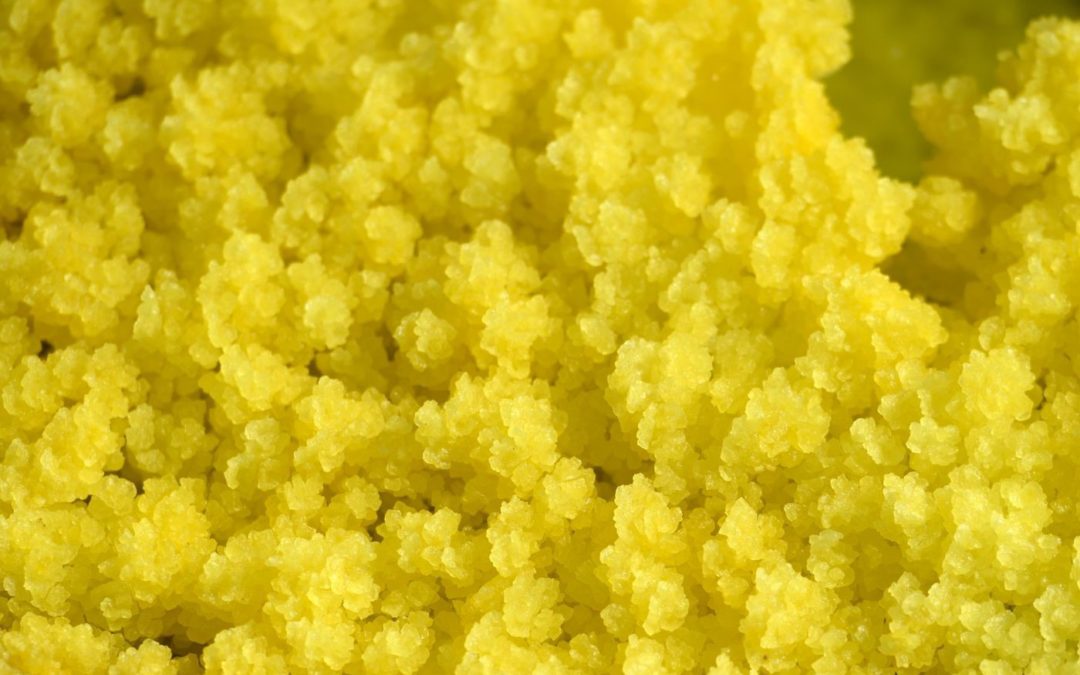David Fickling is a Bloomberg Opinion columnist covering commodities, as well as industrial and consumer companies. He has been a reporter for Bloomberg News, Dow Jones, the Wall Street Journal, the Financial Times and the Guardian.
Read more opinion Follow @davidfickling on Twitter
What’s the most important element in global commodity markets right now? Carbon? Copper? Gold?
Wrong on all three counts. Sulfur — the yellow, infernal substance that gives rotten eggs their smell and hardens the rubber in car tires — is quietly roiling the energy industry. The disruptions could reshape everything from Australian coal, to the diesel and gasoline in your car, to petcoke, a coal-like residue of oil refining burned in Indian power stations.
If oil prices rise from their current levels of $74 a barrel to $400 or more in 2020 — a situation predicted by analyst Philip Verleger that would almost certainly trigger a global recession — you’ll have sulfur to thank.
The reason sulfur is important isn’t that the world is running short. Quite the opposite: There’s enough locked away in the world’s fossil fuel deposits to feed current levels of demand for more than 7,000 years. The problem is that there’s too much of it.
The proximate issue centers on the world’s shipping fleet. Atmospheric levels of sulfur dioxide have been falling since the early 1980s, when fears around acid rain, asthma and heart disease saw coal-fired power plants install scrubbers to remove the pollutant from their smokestacks. The maritime industry, however, has been stuck in the past.
For years, cargo ships have been powered by about 4 million barrels a day of the dirtiest, bottom-of-the-barrel fraction of crude, a tarry substance known as bunker fuel or residual fuel oil. That’s set to change in less than 18 months, after the International Maritime Organization adopted rules that would keep the sulfur content of the bunker fuel on standard ships below 0.5 percent from Jan. 1, 2020.
Sour Grapes
More than half the world’s crude oil production is sour or medium sour, and it’s getting more so
Source: Eni World Oil Review
That’s a problem, because almost two-thirds of the world’s crude oil production is in medium sour and sour grades that are at least 0.5 percent sulfur (the “sweet” grades like the Brent and West Texas Intermediate benchmarks are so called because of their lower sulfur content). Bunker fuel and petcoke have traditionally been where refiners have dumped the sulfur that’s already banned from lighter distillates such as jet fuel, gasoline and diesel. The new rules present them with a waste-disposal problem.
The new IMO rules won’t make bunker fuel production dry up altogether. The likelier outcome is that refiners will blend each barrel with about three of lower-sulfur fractions — principally gasoil or middle distillate, essentially the same stuff as automotive diesel — to get the proportion down from 2015’s average of 2.45 percent. But that, of course, will require an additional 2 million barrels a day or so of lower-sulfur fuel, and it’s not clear that the world’s refiners can shift so fast.
Cocktail Shaker
The mix of oil products making up bunker fuel is about to change drastically in 2020
Source: PKVerleger LLC, International Energy Agency
What would the result be? One possibility is that the rules are simply ignored by the shipping industry, but the IMO’s rules on the issue don’t leave a lot of wiggle-room for cheats.
Another would be for shipowners to install their own scrubbers allowing them to use higher-sulfur fuel — but while that’s a potentially cost-effective option, it’s looking unlikely. There simply isn’t the capacity for more than a fraction of the 60,000-strong global fleet to be fully retrofitted in time to meet the deadline, and with that knowledge and a backdrop of chronic overcapacity and low margins, shipping companies have passed the buck to refiners.
The decisive issue will be how they deal with it. Those set up to consume sour crudes and produce large fractions of higher-sulfur fuel oils may find themselves struggling, as the sudden shrinkage of an end-use market eats into the economics of their operations and they have to rejig to stay in business.
Those with the capacity to process sweeter grades will do better — but they’ll also need more raw materials. As we wrote recently, the world’s most abundant supplies of sweet crude are currently locked away from global markets in the U.S. oil patch, and it’s touch and go whether new pipeline developments will clear that bottleneck in time.
There may even be potential to process sour crudes into sweeter end-products by using cokers to turn the residual fractions into petcoke — but that model may be under threat too, as we’ll explore in a subsequent column.
Crack of Doom
Discounts over the crude price for January 2020 sulfur-heavy fuel oil have widened as the date has approached
Source: Bloomberg
That, and the widening discount of January 2020 fuel oil over Brent, gives weight to a more pessimistic analysis: Shortages in the heaviest fractions of the barrel will drive up the prices of gasoil, jet fuel and gasoline, boosting the cost of crude itself until the market rebalances.
If refiners make the wrong adjustments, that could play out in unpredictable ways. The last time we saw this sort of disruption in the oil-products market was arguably in 2008, when prices topped out at $150 a barrel. The world may already be seeing the early signs of an oil shock. How it deals with this tiny impurity could decide whether recent price rises turn into an all-out frenzy.
First in a series on sulfur in the fossil-fuel market. Part two can be found here, and part three here.
This column does not necessarily reflect the opinion of the editorial board or Bloomberg LP and its owners.
To contact the author of this story:
David Fickling at dfickling@bloomberg.net
To contact the editor responsible for this story:
Matthew Brooker at mbrooker1@bloomberg.net
Before it’s here, it’s on the Bloomberg Terminal.








